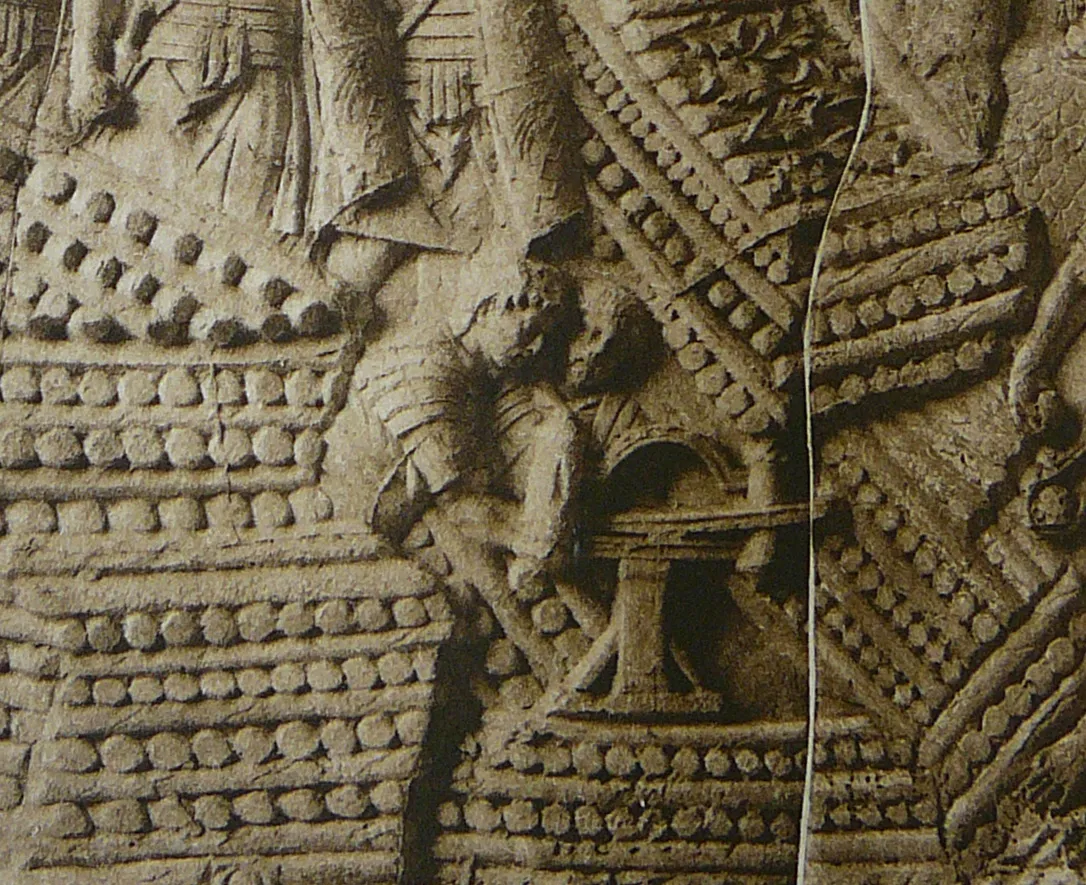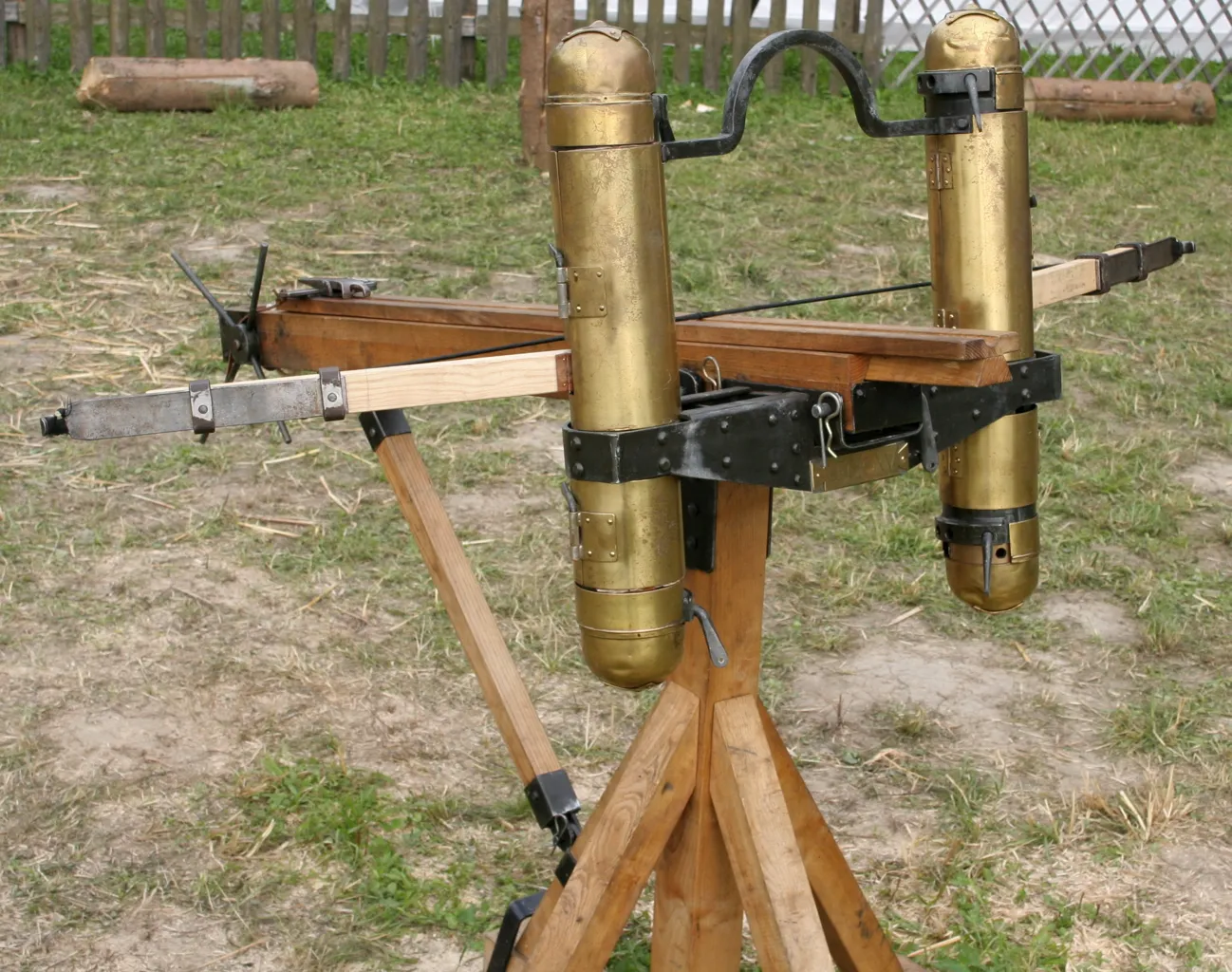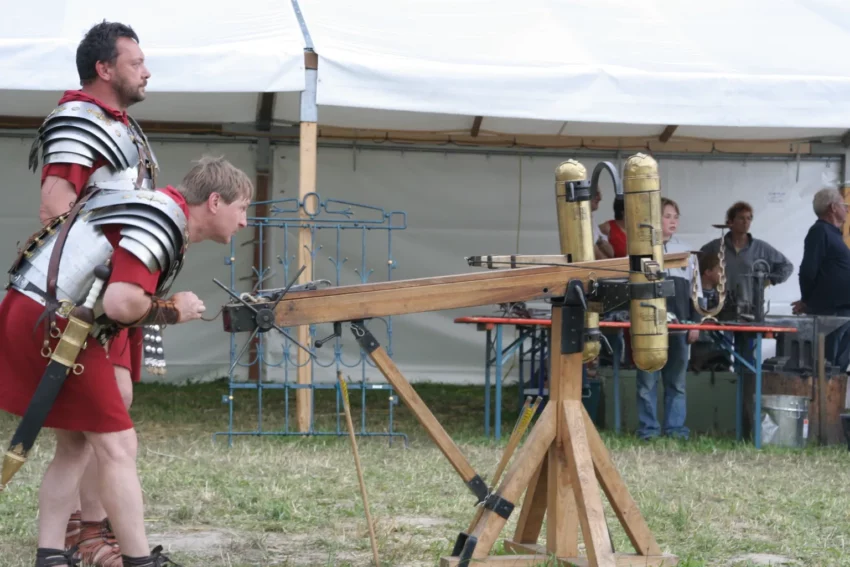The Scorpio: A Stinging Weapon of the Roman Arsenal
The scorpio, also known as the scorpion due to its stinging nature, was a fearsome Roman torsion siege engine. It functioned primarily as artillery during sieges and field battles, striking fear into the hearts of enemies with its powerful projectiles.
Get your dose of History via Email
Origins and Design Variations
The scorpio’s exact origin predates documented history, though Roman architect Vitruvius detailed its design in the 1st century BC. Evidence suggests its use even earlier. There were three main types of scorpios:
- The Classic Design: This version resembled a ballista with two horizontal arms storing torsion springs.
- The Onager: This was a vertical, one-armed version known for its simplicity and ease of operation.
- The Tribolos: This lesser-known variant scattered caltrops (spiked devices) on the battlefield to hinder enemy movement.
The scorpio’s construction involved a sturdy wooden frame, likely reinforced with metal bands for additional strength. Sinew springs, typically made from strong ox sinew, provided the weapon’s throwing power. An arm equipped with iron hooks launched a variety of projectiles, depending on the situation.

Operational Use and Tactical Advantages
Julius Caesar famously used the scorpio during the siege of Avaricum in 52 BC. It served as an effective anti-personnel weapon, capable of piercing enemy shields and inflicting heavy casualties. Vegetius, a later Roman military writer, noted that scorpios were sometimes mounted on carts (carroballistae) for increased mobility on the battlefield. Ideally, each Roman legion possessed fifty-five carroballistae, significantly bolstering their artillery capabilities.
The scorpio excelled in precision shooting at ranges up to 100 meters. For longer distances, reaching up to 400 meters, it employed a parabolic trajectory. Roman commanders often positioned scorpios on high ground, forming a crucial part of their artillery batteries. Their versatile projectiles, including bolts, stones, flaming missiles, and even grappling hooks, rained down destruction on enemy positions.

Challenges and Evolution
Despite its effectiveness, the scorpio had limitations. Its performance could be affected by weather changes, particularly humidity, which could reduce the tension stored in the sinew springs. To address these shortcomings, the Romans eventually developed the cheiroballista in the later Roman period. The cheiroballista likely incorporated improvements beyond just weather resistance, potentially including advancements in firing mechanisms or projectile power.
Conclusion: A Legacy of Roman Ingenuity
The scorpio stands as a pivotal weapon in Roman military engineering. Its design and tactical use revolutionized siege warfare and battlefield tactics. While not without limitations, the scorpio’s legacy lies in its demonstration of Roman ingenuity in crafting powerful and versatile siege weaponry. This fearsome device helped secure Roman victories for centuries and continues to fascinate historians and military enthusiasts today.
Sources:


